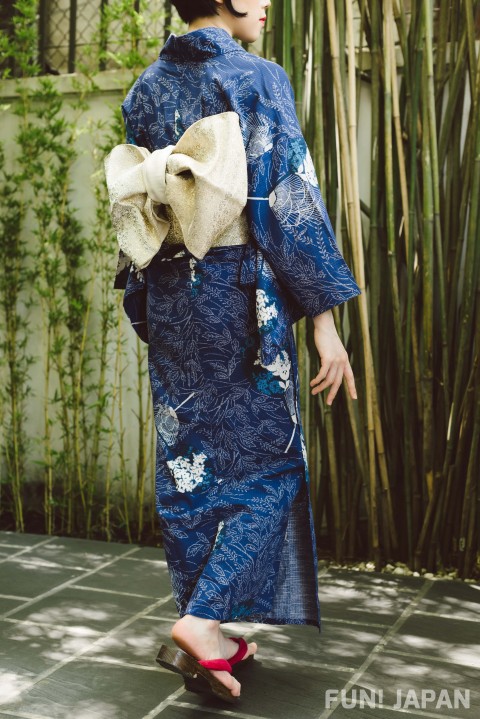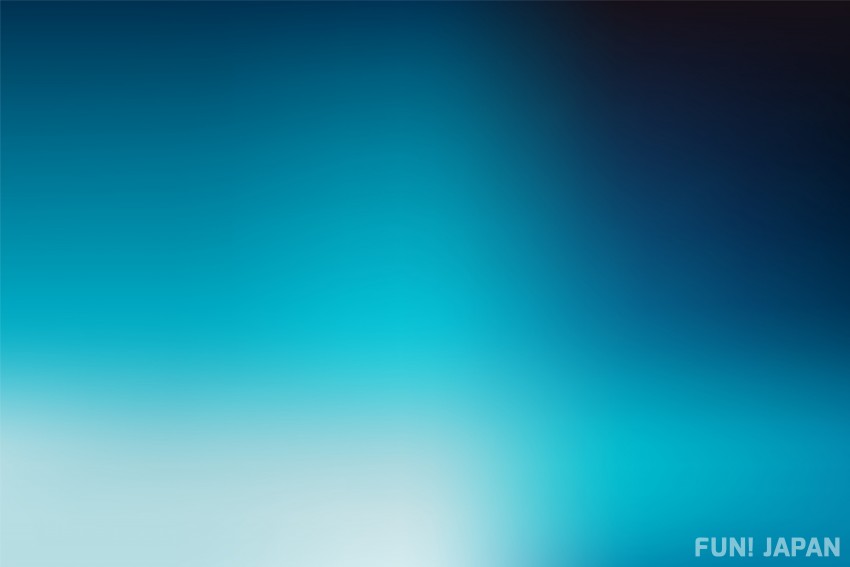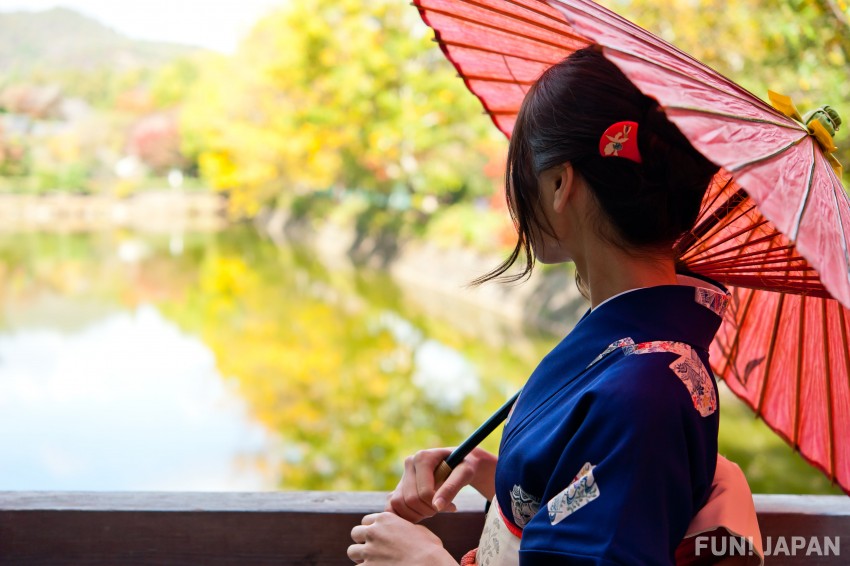
Blue is also the colour of the sky and has been familiar to the masses since ancient times. Here, we will explain in detail about blue kimono that gives a refreshing impression to the viewer.
Blue Kimono's History

A typical blue colour in Japan is indigo (藍色 Ai-iro). It is said to be the oldest dye of mankind, and it was introduced to Japan about 1500 years ago from China via Korea.
During the Kamakura period (around the 12th century), the custom of samurai wearing a kind of indigo called "Kachiiro" (かちいろ) under armour was well established. It is said that indigo has anti-inflammatory, detoxifying, and hemostasis effects, and that "kachi" is associated with "winning" (勝ち kachi), thus it is said to be good luck.
In the Edo period (around the 17th century), indigo colour became popular not only in kimono but also in working clothes and shop-curtain.
At the beginning of the Meiji era, the British chemist Atkinson, who was invited to Japan, was surprised at the deep rooting of indigo dye in Japanese life, and is said to have called indigo colour as “Japan Blue”.
Colour Types of Blue Kimono

Although blue is blue, there are various blue colors in traditional Japanese colors.
- Indigo colour (藍色 Ai-iro): A dark blue that is not as pure as blue. Indigofera (藍 ai) is one of the oldest dyes used as a blue dye, and pure deep blue came to be called indigo (ai-iro) only after the Edo period. It was also called "Japan Blue" in foreign countries.
- Light Indigo colour (縹色 Hanada-iro): It is a colour name of indigo dye that has been known for a long time, and it is a lighter color than indigo colour. The colour name has been changed many times, from Hanada-iro (はなだ色) in the ancient time, Hanada-iro (縹色) in the Heian period, and Hana-iro (花色) in the Edo period.
- Navy Blue colour (紺色 Kon-iro): The darkest color among indigo dye, which is a deep blue color that contains a slight redness. The English name is "Navy Blue". Originally Kon-iro is a colour-dye name in ancient China, it was introduced to Japan along with its colour in the Heian period, and has been established since the Middle Ages.
- Lapis Lazuli colour (瑠璃色 Ruri-iro): A vivid blue with a deep purple hue. Originally "Ruri" (瑠璃) is a gem produced at Mt. Sumeru (須弥山 Shumisen), which stands in the centre of the Buddhist world, and is one of the seven treasures of Buddhism. The bluish color named after the color of the gem was also considered sacred as the supreme color.
- Sky Blue colour (空色 Sora-iro): It is a light blue color with a pale purple color that reminds us of a sunny daytime sky. Sky blue is a colour name that has been used from the ancient time, but since the Meiji and Taisho eras, it has become a preferred color for literary works and has become more widely used.
- Light blue colour (水色 Mizu-iro): A pale blue color that imitates the color of clear water, and was popular and popular as a summer kimono during the Edo period.
Seasons when Blue Kimono Shines

The cool blue kimono that makes you imagine the sky and water is very popular as a summer kimono. Blue kimono is not common during the coming of age ceremony, a Japanese event that takes place in winter. However, some people enjoy cool, neutral coordination by matching traditional Japanese patterns with classic Japanese patterns or with monotone.
On the other hand, dark blue kimono such as navy blue and indigo is worn throughout the year as a kimono for men.

Comments